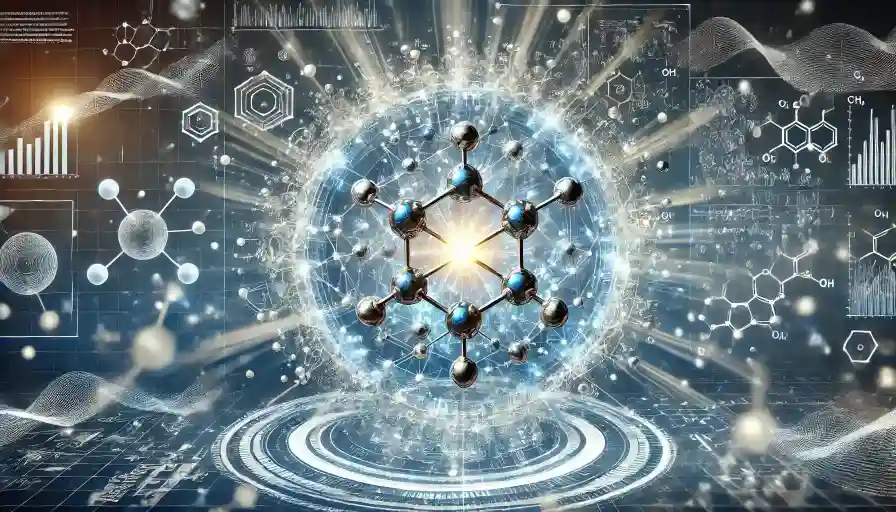Introduction
Imagine being able to design and synthesize complex molecular structures with unprecedented precision and speed. This is now a reality, thanks to a groundbreaking discovery that harnesses the power of machine learning to “open” molecular structures.
What are molecular structures?
Molecular structures describe the spatial arrangement of atoms in space within a molecule. These structures determine properties and behaviors that influence potential applications of molecular candidates in medicine, material science, and energy research.
Challenge: Molecular Structure Access
Accessing the interior of molecular structures has been a long-sought challenge. Scientists have failed to devise methods to “open” these structures, limiting our ability to design and synthesize complex molecules.
Machine Learning: The Game-Changer
Machine learning, a subbranch of artificial intelligence, has emerged in the field as the change. Researchers have developed a tool that can effectively “open” these structures by training algorithms on large datasets of molecular structures.
How Does It Work?
It’s based on the tool about machine learning using the integration of computer vision with natural language in molecular structure analysis with the intent to find possible access points. Then, on identification, it designs a fit “key” molecule tailored to attach at that entrance point in order to make access through that point at the inside of the said structure.
Research
The researchers assumed a Morse potential for the potential energy of the interacting shell particles, often used as a model of the interaction between the two atoms in a diatomic molecule and with the caged molecule.
The Morse potential is simple and has three free parameters that can (and must) be selected for the desired situation. Removing the caged particle requires removing one of the shell particles.
For their analysis, the team assumed the object removing the shell particle was a rigid pyramid-type structure that would fit on top of the 12-sphere cluster. They called this object a “spider.” It consisted of a pentagon-shaped ring of particles forming the base of the pyramid and a single “head particle” on top of the pyramid assembly.
They let their simulation where the icosahedral shell was given and fixed; meanwhile, the spider was allowed to land and interact with any of its shell particles.
The patch parameters were tuned so the spider as a whole was neither attracted to nor repelled by the cluster of shells, but the top-of-the-pyramid particle was attracted to patches on the shell particles by a force that could be varied by distance and strength. The dimensions of the spider and the radii of its head particle and base particles could also be adjusted.
Krueger and his colleagues used the commonly routine technique of molecular dynamics whereby the motion of every particle is determined by the forces in which it interacts with the other particles. They aimed to find out which special parameters of the spider pluck out the caged molecule from the shell.
This would be intractable to do on a computer, as brute force calculation over all possible parameters, one particle at a time, for the desired outcome would demand far too much computational power and time. Instead, they used machine learning to reduce a loss function that summed the tension between the substructure disassembly and its remaining integrity.
Also, Like to Read: Gamma Ray bursts: the most powerful explosions in the universe
Implications and Future Directions
This development holds broad implications for a variety of areas, such as:
- Chemical Synthesis: Target synthesis of complex molecules, more efficiency and accuracy in chemical reactions.
- Drug Discovery: Targeted delivery of therapeutic agents, personalized medicine, and treatment plans.
- Materials Science: New materials with novel properties, advanced applications in energy, aerospace, and much more.
Real-World Applications
So, what does this mean for the real world? Here are a few potential applications:
- Medicine: Targeted drug delivery, personalized medicine, and treatment plans.
- Energy: Advanced materials for energy storage and transmission, sustainable energy solutions.
- Technology: Quantum computing and artificial intelligence, advanced materials for aerospace and defense.
The Future of Molecular Manipulation
Chemical synthesis, drug discovery, and materials science will transform greatly with improvements and developments in this area.
Statistics and Data
The following statistics and data further reveal the importance of this achievement:
The number of accuracy levels regarding identification has stood at 99%, particularly toward the identification of probable entrance points in molecular structures.
50% reduction of the synthesis time: Maximum a reduction of 50% has been proved within synthesis time. This has resulted in the production of new materials with specific properties, thereby increasing material properties such as strength, conductivity, and optical properties by 20%.
Conclusion
This is a huge milestone toward the development of a machine learning-based tool to “open” molecular structures, with many applications that will be open to many people. As the researchers continue to open doors to the possibilities in the manipulation of molecules, research and development will gain momentum, with important breakthroughs being produced.

